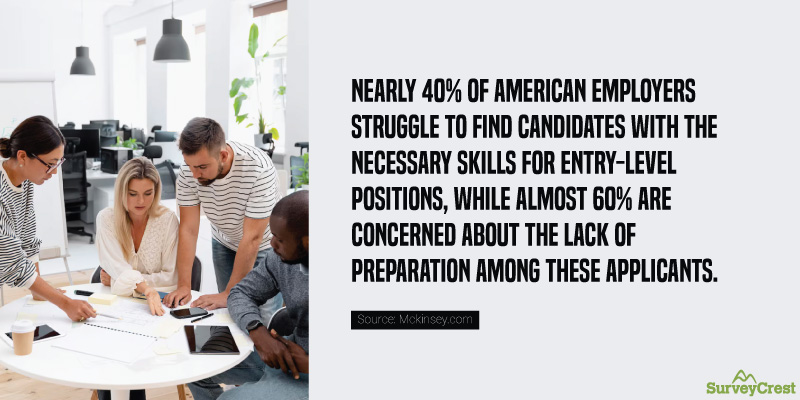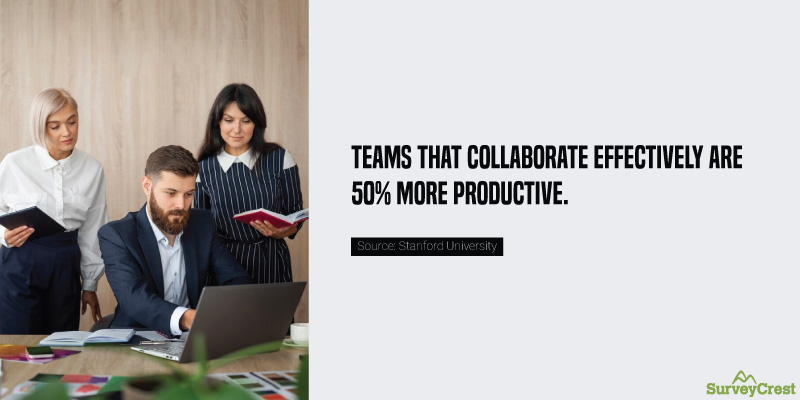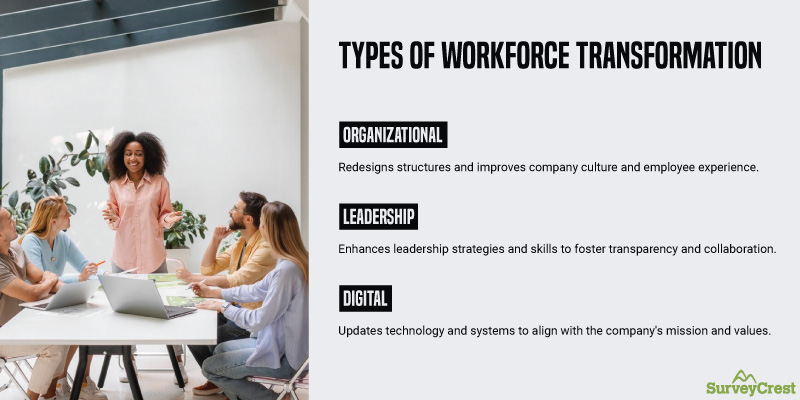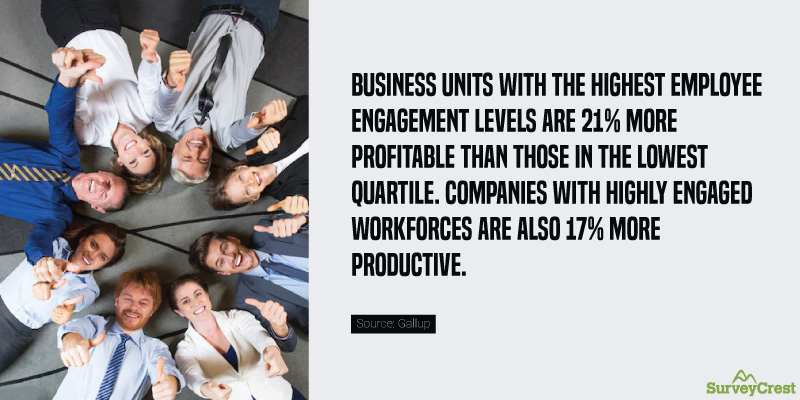
Photo Credit: iStock/rudall30
All organizations aim for long-term success and growth. They are not wrong to do so because the competition is tough these days. To achieve what they aim for, they must bring a well-developed and managed workforce. Any workforce in the world has the ability to drive innovation, increase productivity, and maintain a competitive edge in the tough market.
According to a data, 81% of the companies said they would invest in their workforce’s learning and training on the job. The reason behind the investment is the opportunity to elevate the workforce and ensure progress.
Let’s talk more about this investment in detail as it is the first strategy for building a top-tier workforce.
Your employees are your hands that need to get stronger every day. Investing in the continuous development of your employees is fundamental. For the most part, the investment would be in training programs, professional development courses, and seminars for skill enhancement. In order to cultivate a culture of unbroken training and learning, make sure that your workforce stays adaptable in the latest industry trends and technologies.

By investing in the development of your workforce, your employees will be equipped with the necessary skills and knowledge to gain mastery of their respective roles. Training programs, workshops, and professional courses are among the common practices through which you can set your employee management software in usa up for success and ultimately lead them to excel in their careers. The good thing about such practices is that your employees will have what it takes to perform tasks and contribute to your company’s productivity.
It does not end here! You will give a boost to your employees’ morale. Think about it; your employees will notice that you hanker for their growth, allowing them to experience the much-needed employee satisfaction for the workforce. When you incline them towards feelings of value and appreciation, they will show increased commitment to your company. After all, a company with a dedicated workforce has drastic ways to reduce turnover rates.
Who knows? Maybe you will carve out some future leaders within your company. In addition to training programs, workshops, and professional courses, you might want to include leadership training programs and succession preparation to warrant a steady pipeline of worthy leaders. A leadership pipeline is crucial because it maximizes the overall success of your company.
This particular strategy involves aligning your team’s goals with the company’s objectives and the employee’s job description. It requires clear communication, setting achievable targets, and providing resources for guaranteeing success.
A key aspect of the second strategy is promoting communication and collaboration between your team members. Present them with clear communication channels and collaborative tools to build togetherness and mutuality. When everyone is on the same page, a lot of misunderstandings and conflicts could be decreased. Therefore, prioritize a collaborative environment encouraging teamwork and collective workforce engagement in the companies.

If your employees understand their roles and responsibilities better, will you ever find yourself in a state of worry? You will immediately feel a sense of purpose and direction in your company. The sound minds of your employees will help them stay clear of any confusion and propel them to accomplish the given aims.
Another aspect of this strategy is the optimization of resource utilization. These resources range from time to manpower, granting employees an equal chance to largely leverage their skills. Proper resource utilization is a cornerstone of great workforce optimization and employee retention when you supply your employees with the must-have equipment for carrying out their tasks, namely computers, software, vehicles, machinery, etc. Everything should run on a budget, thereby necessitating you to wisely optimize your resources.
The third strategy relates to the dynamic approach to changing your workforce to meet the fluctuating demands of the market, technology, and business strategies. At some point or another, you will have to reshape your workforce for the sake of productivity, innovation, and a competitive edge.
As technology evolves, arranging digital skills for your employees is indispensable. The transformation revolves around training programs that assist employees in learning and using new tools, software, and systems. In addition, since we live in the era of artificial intelligence (AI), its integration is inevitable. Integrating AI into your business operations will alleviate the burden of repetitive tasks. This transformation lays the groundwork for identifying tasks that have the potential to be automated. So, train your employees to work alongside AI tools, helping them enhance workflows, make employees smarter, and improve productivity.

The transformation plants a culture of diversity. When you have a diverse workforce, it will invite unique perspectives and ideas, driving innovation and problem-solving techniques. With the element of diversity, there will be calculated efforts made to recruit and retain employees from different backgrounds. Besides that, you will have a crack at expanding your market reach and accessing a diverse customer base. Consequently, you will tailor your products and services to cater to various market segments, integrate IT management solutions, and give your employees something exclusive to work on.
Your brand loyalty will also strengthen with this transformation. Companies emphasizing transformation are viewed more favorably by consumers, partners, and investors. Because of that, you will lift your brand loyalty and obtain a competitive advantage in the future.

Image Source: freepik.com/master1305
Strategic workforce planning is a proactive and systematic process that ensures you have the right people, with the right skills, in the right roles, at the right time. This method is essential for being in accord with the goals of the workforce and your company’s full-scale goals as well as adapting to changes in the business environment.
Here is what you want to do to sketch your plan for your workforce:
Conducting a comprehensive skills inventory will enable you to picturize the current capabilities of your workforce. It is associated with cataloging the skills, qualifications, and experiences of employees.
Example: A technology company anticipating growth in artificial intelligence (AI) might conduct a skills inventory to determine how many employees have expertise in AI and machine learning. If gaps are identified, the company will have no problems initiating targeted training programs or hiring new talent to fill these gaps.
The second part of the strategy ties in with forecasting future skills requirements based on business goals and market trends. It will enable you to anticipate and prepare for the skills your employees will need to stay viable.
Example: A healthcare organization preparing for an increase in telehealth services may forecast a requisite for more IT professionals skilled in telemedicine platforms, cybersecurity, and data analytics. By anticipating these needs, the organization is in an ideal position to start training current employees.
Utilizing workforce analytics enables organizations to make informed decisions derived from data. It analyzes employee performance, gauge employee engagement levels, turnover rates, and other critical metrics to discover trends and areas for improvement.
Example: A logistics company might use workforce analytics to analyze driver performance data, identifying patterns that lead to high efficiency and low accident rates. This data is then used to develop targeted training programs and recruitment strategies.
Encouraging employee empowerment and autonomy is the final strategy for building a top-tier workforce. When employees are given the freedom to take ownership of their work and make fruitful decisions, they become more engaged, motivated, and innovative.

Here is a look at how to cultivate empowerment and autonomy in the workplace:
Empowerment and autonomy show that you trust your employees to perform their tasks effectively. Trust entails accountability, where employees feel responsible for their work and outcomes.
Example: In a healthcare setting, a hospital empowers nurses by allowing them to make certain patient care decisions without needing direct approval from doctors. This trust results in faster, more responsive patient care and job satisfaction among nurses.
Empowerment and autonomy are a means of skill development. When employees are exposed to new responsibilities, they have the prospect to learn and grow. This puts a more skilled and versatile workforce in motion.
Example: A manufacturing company delegates the responsibility of quality checks to team members on the production line. It maintains high standards and develops employees’ skills in quality control and problem-solving.
When employees are allowed to make decisions, they are more likely to experiment with new ideas and maneuvers. It is conducive to their continuous improvement in the company.
Example: A tech company encourages software developers to decide on the best tools and technologies to use for their projects. This freedom welcomes the adoption of cutting-edge technologies and innovative solutions.
Creating a safe-to-fail environment where employees are persuaded to take risks without fear of punishment for failures advocates innovation. Learning from mistakes is a significant phase of growth and development.
Example: A pharmaceutical company establishes innovation labs where researchers experiment with new drug formulations. Even if some experiments fail, the knowledge gained can possibly cause breakthroughs in other areas.
Empowerment and autonomy are incomplete without recognizing and rewarding innovative ideas and successful risk-taking. Rewards should be in the form of monetary incentives, public recognition, recognition letters, or career advancement opportunities.
Example: A software company holds an annual innovation award ceremony to recognize employees who have contributed groundbreaking ideas or solutions. This recognition motivates others to think creatively and take initiative. Engage your workforce in networking events to ensure your team is always at the forefront of industry trends.
Building a superior workforce calls for a tactical outlook that focuses on several primary areas: investing in workforce development, implementing effective workforce management, embracing workforce transformation, engaging in strategic workforce planning, and encouraging employee empowerment and autonomy.
If you spend your time, money, and energy on constant development, alignment of team goals with company’s objectives, workforce diversity, proactive planning, employee empowerment, you will harbor innovation, expand productivity, and sustain your competitive edge.
Kelvin Stiles is a tech enthusiast and works as a marketing consultant at SurveyCrest – FREE online survey software and publishing tools for academic and business use. He is also an avid blogger and a comic book fanatic.